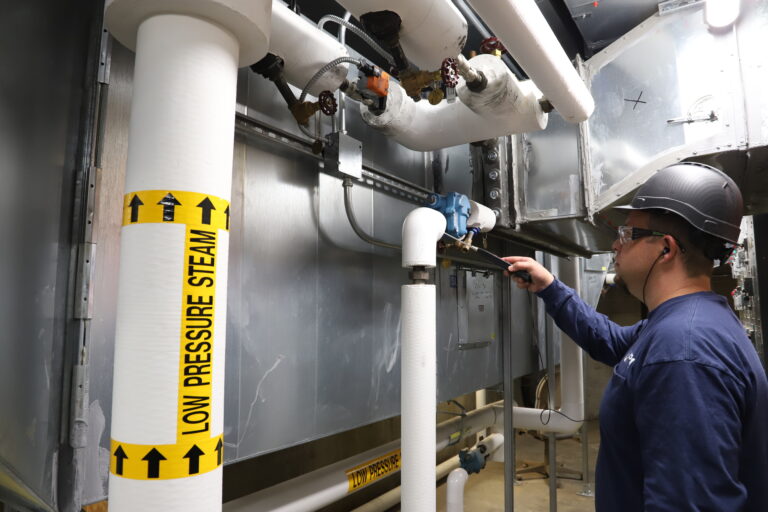Test of agility
Ushering in a whole new take on the office environment BT is embracing the principles of agile working and claims to have shaped a happier, healthier workforce as a result
by Adam McNestrie
Flexible working is increasingly a la mode. The government has given all parents with children up to the age of 16 the right to request it, business magazines (this one included) are replete with articles extolling its virtues and HR professionals coo adoringly at its very mention. The principles of flexible working are now so much a part of the pool of commonly drawn-on ideas that trailblazing British Telecom is no longer interested in operating under the term’s banner. To them, flexible working is first generation thinking; its day has passed. BT has moved on to the next generation of management thinking, the new paradigm. They call it agile working. Agility is flexibility’s buffed-up, more cocksure cousin. In essence, agile working is flexible working that is extremely flexible.
BT’s agile working initiative is based on the idea that the old conception of the office is dead. Globalisation, the telecoms revolution and the inflation of consumer demands have ganged up to do away with it. A wasted hour commuting each way everyday, one-person-one-desk, telephones tethered to desks, a heavy reliance on face-to-face meetings, territoriality, status hierarchies and an obsession with presenteeism: all have been jettisoned. The sacred cows of 150 years of management practice have been unsentimentally culled.
In their place stands agility, the new idol. Agility is based on the premise that you will get the best out of people by freeing them. The theory is that people achieve most when they feel most in control of their work. The Anarchist commune trumps the Big Brother office. Looking over people’s shoulders to make sure that they seem to be doing what they supposed to be doing is misguided; instead Caroline Waters, director of people at BT, says that the key is to create “trust-based relationships”.
Let people look at Facebook, let people cut the commute out when they can, free them up to sit in the part of the office that best suits the task that they are performing and (however counter-intuitively) they will work more productively. When the need for them to appear to be doing their job disappears, they find themselves free from distractions (like hierarchy, the phoney work-life divide, and the stress of the tube) and better able to actually do their job.
Mapping exercise
So what did BT do? They started off with a massive data-collection exercise, an attempt to map the work activity of people working across 8,000 properties in 66 countries. Graeme Paton, director of property, told FM World that BT launched a Work Modes scheme in 2006 so that they could model work patterns, space utilisation, desk take-up and task-type. Using the e-census system, which integrates data from IT and security systems, BT was able to plot property utilisation against cost centres to create time-series information.
On the foundation of this modelling work BT is revolutionising its working practices. Eighty per cent of its workforce is already working agilely. And in the next six years the telecoms behemoth is aiming to increase its people per workstation ratio from 1.1 to 1.6, a move that would see 23,000 workstations eliminated in the UK. The reduction is a necessary precursor to a considerable reduction in the company’s gargantuan 75.3 million sq ft portfolio. It isn’t just the office-workers either; call-centres too are increasingly working agile. They call it home-shoring. This is the advent of the virtual call centre: staff working at home in split-shifts, some as short as 30 minutes. Carers make up 80 per cent of the home-shoring workforce.
“When you compare the price of technology to the price of space, it just makes plain business sense,” says Waters. She insists, though, that this is not a cost-cutting programme in fancy dress in spite of the recent well-publicised job cuts and 2009’s share-price fall. “It came from a strategic direction. We needed to meet the challenges of a globalising world and a more demanding public.” BT has had to buy in 68,500 laptops, 20,000 tough-books (for field engineers) and 4,500 pagers as well as countless mobile phones, but neither Paton nor Waters has any time for the suggestion that the results might not justify the up-front investment.
Strong on productivity
The case they build for the success of the programme thus far is compelling. Waters calls it “a transformational tool” and she can point to gains on cost, personnel and sustainability. Their strongest card, though, is productivity. For a long time the utilities sector had a poor reputation for productivity, but agile working has had a powerful and measurable effect. Some workers have shown a 30 per cent increase in productivity after they transitioned to flexible work methods.
What does that mean, though? When the emphasis is no longer on putting in screen time and getting into the office before the cock crows, how do you know whose performing and who isn’t? “What we’re going to measure is your contribution,” Waters answers. BT is measuring staff performance against a mixture of hard KPIs and soft measures. Performance against these written, measurable criteria is better under agile practices. And it isn’t a self-selecting elite either. Measure a Fordist office worker’s productivity, allow them to switch to agile working, wait a few weeks and (on average) their performance will have improved considerably.
They’ll be working longer hours too. On average homeworkers devote 40 per cent of the time they save commuting to and from work on other things and 60 per cent on their work. They are also more likely to do out-of-hours work because it’s that much easier to fit around other things.
War on territoriality
Agile working isn’t just about more work, though: it’s about better work too. BT has used it as a “catalyst for change” (Paton). The company has declared war on hierarchy and territoriality: collaboration is the new watchword. Staff work in large team zones (like property and HR) within which they hotdesk. Each of these zones has desks made available for visitors from other teams. And there are also spaces (the World Zone) in which anyone can book space. Cellular offices and the old “status-based” laptops are out. The only remaining “private” offices are HR offices where confidentiality is an issue, but Paton says that even these are “multi-use” rooms; the sense of ownership is gone. But so has the personal touch. Constant hotdesking and the tidy-desk policy means that you don’t see photos of people’s children on the desk or odd souvenirs of half-remembered holidays. People don’t have turf in the same way.
Waters says, though, that the vast majority of staff feel liberated. “Most people have really embraced it, but you have one or two who still want to protect their territory.” Early engagement and education was key. The perceived output has been increased cross-fertilisation and creativity. This is difficult to measure but Waters points to the increased speed-to-market of new products as an example of the new work culture. Easier to measure and perhaps even more impressive is the impact which the new working methods are having on the personnel side.
Waters soberly says: “It’s not a panacea, but what we have found is that people are happier and healthier.” The UK average rate for staff returning after maternity leave is 40 per cent. At BT that figure is now an almost implausible 99 per cent; and when mothers are asked why they come back they point to the agile working initiative. The whole-life cost of losing a member of staff and recruiting a new one is estimated at £10,000.
The impact on stress has been almost as dramatic. Stress-related illness is down by 35 per cent. The number of sick days taken has fallen, overall staff retention has improved and the calibre of graduate applicants has increased. Paton says that the workforce has also become more “socially inclusive”. The new styles of working have allowed the company to employ more people with disabilities, young children, or caring responsibilities.
The cornerstone of a property and people strategy
One of the big collateral benefits of agile working has been a stronger record on sustainability. “We have some very ambitious targets on sustainability,” says BT’s property director Graeme Paton. The firm has reduced its carbon footprint by 60 per cent between 1996 and 2006, and it has set itself a target of 80 per cent by 2015. (The government’s own target date for an 80 per cent reduction of carbon emissions is 2050.) Reduced floorspace, fewer commutes and a greater reliance on tele- and video-conferencing represent the delivery mechanism.
The impact is already being felt. Last year remote conferencing helped BT to reduce its carbon footprint by 97,000 tonnes. The firm is also striving to curb the amount of waste that it puts into landfill. A waste segregation scheme has already been rolled out to 16 major office sites and the business is aiming to reduce its waste output by 6 per cent this year. As the portfolio shrinks the company expects to become progressively more waste-efficient. The potential contribution of flexible working to the environment is massive. Estimates suggest that if just 10 per cent of EU workers adopted flexible working practices the annual saving in carbon emissions would be 22.17 million tonnes.
Paton is emphatic about what you need to make an agile working programme succeed. “For agile working to work you need property, HR and IT to come together.” These three business functions need to partner one another in delivering change; one weak link and the whole thing will collapse. The facilities manager, who often works across more than one of these areas, can be the central figure, crucial to the maintenance of harmony. He is similarly emphatic about the centrality of agile working for BT’s success, calling it “the cornerstone of our property and people strategy.”
One question remains. If these practices are so effective, why are only 3 per cent of people in the UK working flexibly? BT’s director of people Caroline Waters has answered this question before. “The thing that prevents it is attitude: managers worried about losing status and measuring performance; people worried about technology; people who just don’t want to try.”




